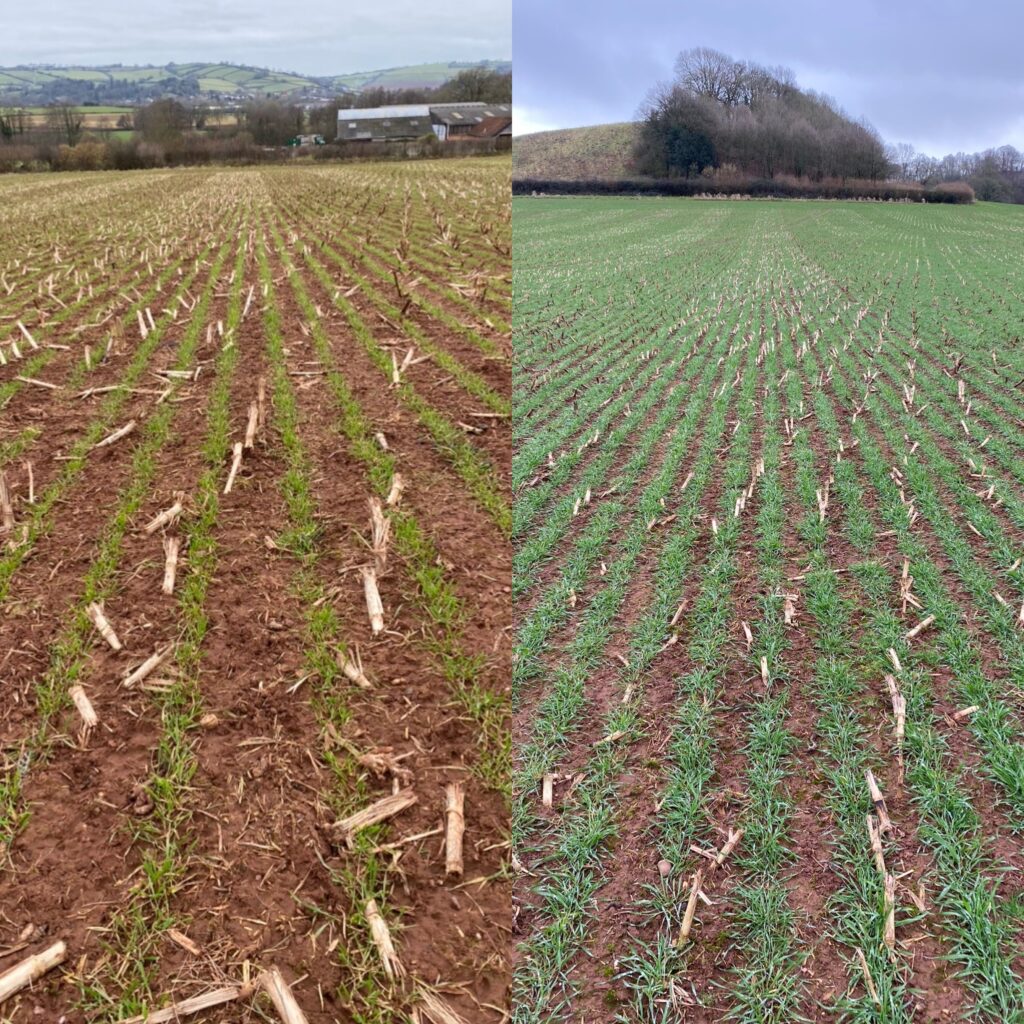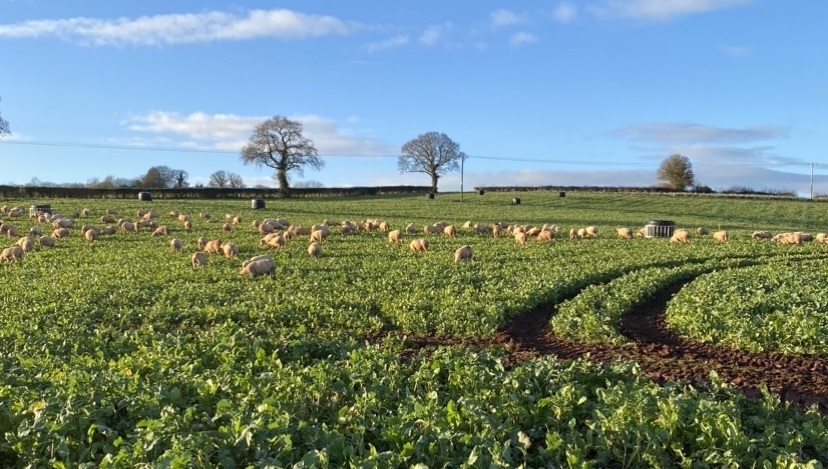April 2023
Following on from my 1st article in Direct Driller last summer, a bit of a summary of what’s been happening since.
Harvest 2022 was a bumper harvest for some, but I have also heard mixed results which is the camp we fell into. Our spring beans and maize were our crops that stood out, winter oats and wheat were average. Spring beans were direct drilled straight into grazed cover crop at the end of March and with not a huge amount spent on them they yielded 5T/ha which was pleasing. I think the direct drilling and cover crop residue did help retain moisture. Winter oats – we grazed one field with our ewe lambs towards the end of Feb and left one field un grazed. The grazed field yielded a good 0.3 T/acre more than the un grazed field. I put some of this increase down to moisture, the grazed field being a more well bodied field than the un grazed field, which is called Sandybanks – and probably called that for a reason. The wheat was a very mixed bag and nothing to get excited about with yield variations mostly relating to soil type, further investigation is still on going to get to the bottom of this.
The strip till maize was a success and we will be doing more this spring. It was a kind autumn so harvester and trailers didn’t make any mess. So I went straight in with our Horsch sprinter and 2” Bourgoult points and I am pleased with how it looks. It was grazed by sheep in late January. (See pic, Same field, L – a week after grazing, R – early March)
The wheats have all looked good after fairly kind autumn weather. They certainly have not been lush and thick, but due to a shortage of sheep fodder we have grazed about half the wheat area during Jan / Feb. Half field trials (see pic) have been carried out, the sheep came off wheat on 6th March and onto some winter oats. The fields are split up with electric fencing and moved regularly. And it’s amazing how quickly it greens back up and you soon see the darker wheat patches from the sheep’s excrement.
The winter cover crops and turnips weren’t as big as some years and then got hit by the hard cold weather in early December. A very wet period followed, 333mm of rain between mid Dec and mid Jan. We have been a bit short of grub and have had to buy some silage bales in to help extend the forage crops by bale grazing the last block of turnips (see pic) and not resort to going onto grass quite yet.
A neighbour used to graze the cover crops, but since having our own breeding flock of Exlana sheep, the dry matter feed value is more important to us as we want the sheep off the grass for as long as possible to give it a good break over winter and to have grass ready for lambing outside in April. Therefor the ideal scenario of graze a third, trample a third and leave a third has not been possible, so we either need to increase the area of winter forage crops or we have to accept that there are always compromises within any system.

Choice of cover crops / forage crop also plays an important role, and we have tried both this year. A good multi species cover crop is great for the soil but does not have the DM feed value (yield) that a turnip forage crop would have. A turnip crop does not have the diversity of species, so we added vetch and berseem clover into turnips this year.
Already having Maize, Beans and OSR in the rotation, the search for another true spring break crop to provide 1st wheat entry continues. We are going to try a spring cover crop after turnips. This will be a multi species mix that we will plant in April and graze over the late summer before 1st wheat in the autumn. It doesn’t bring revenue into the arable enterprise, (not always a guarantee with spring crops anyway!!) but it will help the sheep side of the business, (benefits of now being a mixed farm) and hopefully get the soil in good order for wheat with the added benefit of some sheep poo.

Last harvest all the wheat straw was chopped, trying to put some goodness back into the soil. But in the early years of direct drilling and no cultivations before the following crop, this can cause establishment issues with OSR and cover crops. I am therefore investigating straw for muck deals locally to help with this issue for next harvest and I am hoping we will see the benefits in the future.
We like others are waiting for some grass growth before lambing, our Exlana ewes scanned at 178%, which despite the drought was pleasing. So fingers crossed for a good lambing season soon to be upon us.


